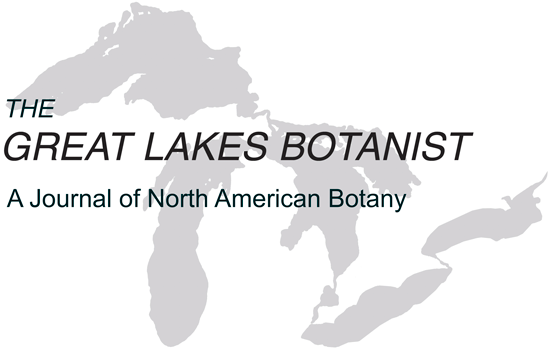ï~~192
THE MICHIGAN BOTANIST
Vol. 44
THE BASIDIOLICHEN MULTICLAVULA MUCIDA (FR.)
PETERSEN: NEW TO MICHIGAN
Matthew P. Nelsen*
Department of Botany
University of Wisconsin-Madison
Madison, WI 53706
While most lichen-forming fungi belong to the Ascomycota, a small number
are known among the Basidiomycota (Oberwinkler 2001). Of the three basidiomycete lichen genera known in North America (Esslinger 1997) only Multiclavula and Lichenomphalia (Omphalina) occur in temperate to boreal regions
(Brodo et al. 2001). These two genera produce ephemeral fruiting bodies, which
make them difficult to detect when basidiocarps are not present. Multiclavula
does not form a specialized, unique thallus as the result of lichenization; because
of this, its classification as a lichen is arguable (Brodo et al. 2001). However, it
is included as a lichen in the North American Lichen Checklist (Esslinger 1997)
and is discussed as one here. While many Multiclavula species are tropical in nature, five are known from North America (Esslinger 1997; Brodo et al. 2001),
and the first is reported for the state of Michigan.
NEW RECORD FOR MICHIGAN
Multiclavula mucida (Fr.) Petersen (Clavariaceae)
MICHIGAN. Baraga County: Found on a rotting log in the King's Lake Campground area, 17 September 2005, Nelsen 3980 (MSC).
This appears to be the most cosmopolitan of the Multiclavula species (Petersen 1967) and is
known from southern Ontario (Wong & Brodo 1992), Wisconsin (Wetmore & Bennett 2002; Thomson 2003; Lay 2004), and throughout eastern North America (Brodo et al. 2001). It typically occurs
on an algal mat (thought to be Coccomyxa) on shaded, rotten logs and has yellowish to orange basidiocarps (Petersen 1967; Brodo et al. 2001). Though this is the first record in Michigan, this species
is most likely much more common and should not be added to the list of rare or endangered lichen
species in the state (Fryday & Wetmore 2001). The apparent rarity of this taxon is probably due to
undercollecting, which may be an artifact of the ephemeral basidiocarps, without which identification is extremely difficult to impossible.
ACKNOWLEDGMENTS
This collection was made during the Poisonous and Edible Fungi of Michigan workshop in
L'Anse, Michigan, and I would like to thank the organizers: Dana Richter, Gerry Adams, Heather
Hallen, Tom Volk and Dan Czederpiltz. Alan Fryday and Carrie Andrew are kindly acknowledged
for discussion.
* Current address: Michigan Technological University, Biotechnology Research Center, 100
Noblet Building, 1400 Townsend Drive, Houghton, MI 49931-1295, mpnelsen@mtu.edu
0


